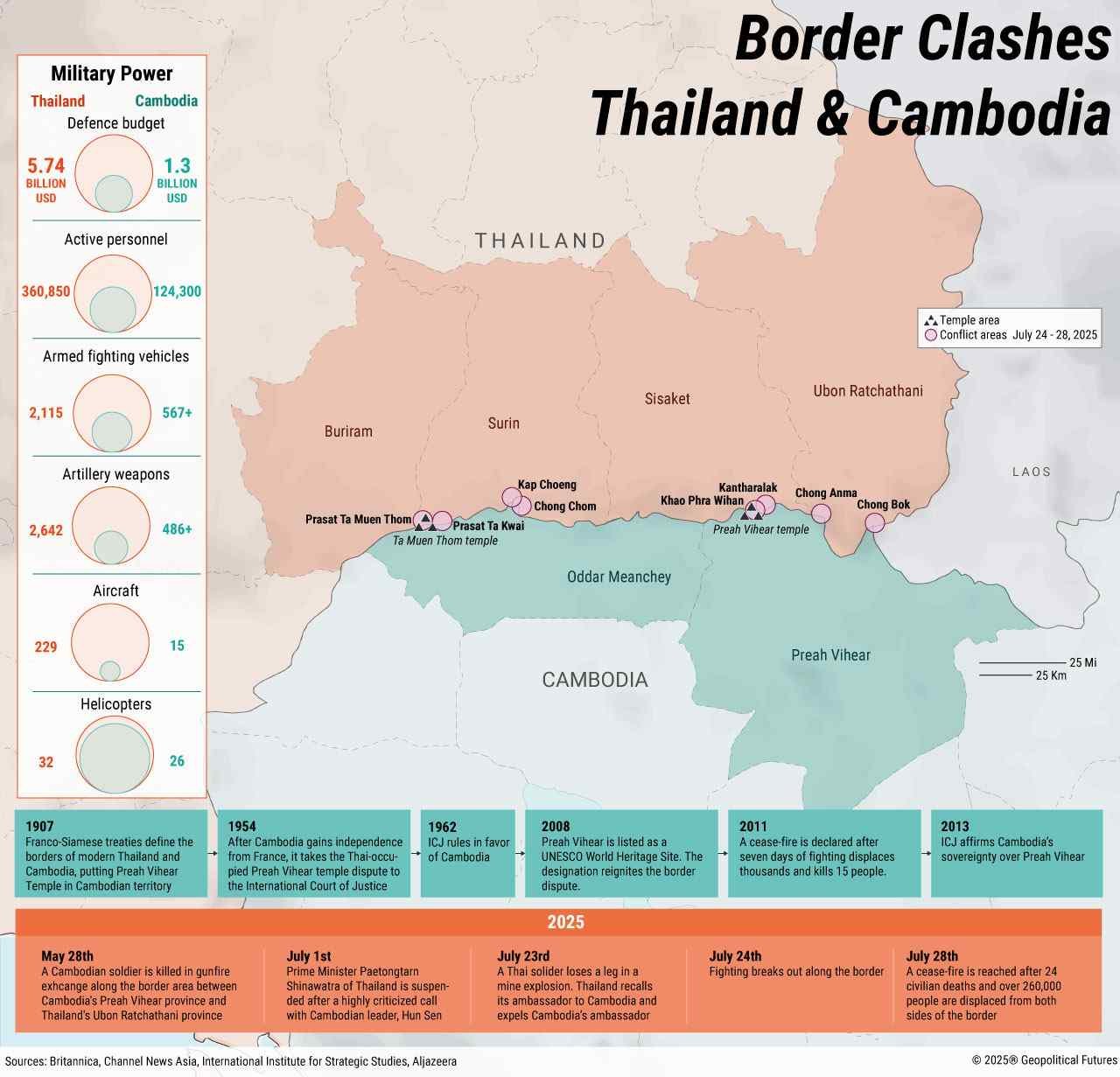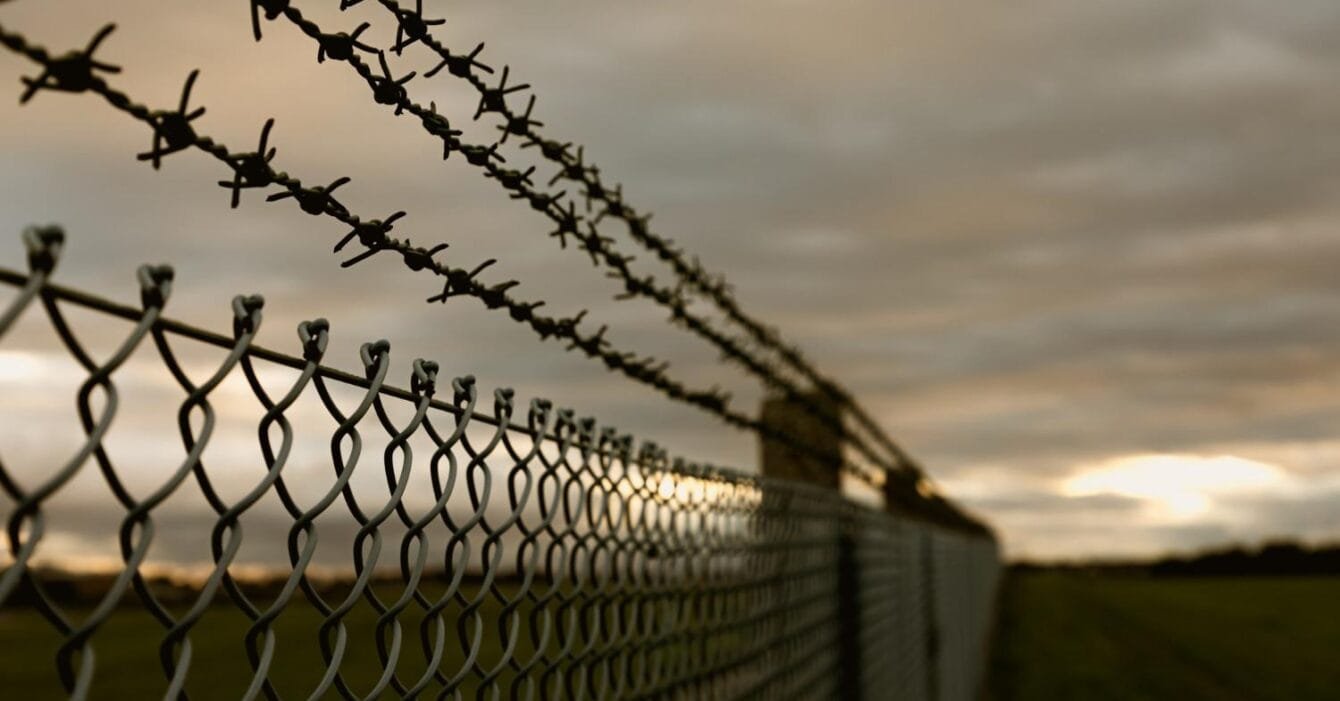The Thai-Cambodian border has long been a fault line for disputes, but 2025 brought one of the most serious escalations in years. The fighting displaced more than 200,000 people, left 48 dead, and caused millions in damage, showing the severity of Cambodia Border Tension Effects.
Beyond the human tragedy, the conflict rippled through trade, tourism, and investment. Today, the new Thai foreign minister’s call for troop reductions and de-escalation offers a glimmer of hope that peace can bring recovery.
Humanitarian Toll of the Border Clashes
The July 2025 conflict forced 138,000 civilians to evacuate in Thailand and thousands more in Cambodia. Families were uprooted, and hospitals and local infrastructure worth US$8.78 million were destroyed or damaged. Hundreds were injured, and displacement reached crisis levels. By mid-August, the number of internally displaced people dropped by 75%, showing that calm was returning, but the scars of violence remain fresh.

These events highlight the severe Cambodia border tension effects on everyday people. Lives lost, homes abandoned, and communities disrupted form the first layer of the crisis.
Cambodia Border Tension Effects: Trade and Tourism Shock
The border clashes also disrupted vital economic lifelines. A US$1.2 billion annual trade corridor between the two countries collapsed when all seven crossings closed on July 24, 2025. For local businesses and exporters, the closure meant halted shipments, supply chain delays, and lost revenue.
Cambodia’s tourism sector, already vulnerable, suffered a 70% decline in international arrivals in July 2025 compared to the previous year. With tourism accounting for 9% of Cambodia’s GDP, the shock struck hard. Hotels, restaurants, and tour operators reported cancellations across the board, leaving thousands jobless and communities without income.
Read Also: Cambodia Garment Export Diversifies to Higher-Value Products
Investment Climate Under Pressure
Foreign direct investment (FDI) faced heightened risk during the conflict. Cambodia’s stock market fell by 12%, reflecting investor unease. Major Thai companies with operations in Cambodia—employing more than 62,000 workers—faced interruptions, exposing the vulnerability of cross-border investments.
For investors, the Cambodia border tension effects were clear: conflict heightens uncertainty, disrupts business continuity, and erodes confidence. Both short-term volatility and long-term planning were impacted, forcing companies to reassess strategies in the region.
Diplomatic Moves Toward Calm
After five days of deadly clashes in July, a ceasefire was brokered. Since then, relative calm has prevailed, but tensions linger. The new Thai foreign minister has called for troop reductions, withdrawal of heavy weapons, landmine clearance, and crackdowns on illegal activities along the frontier. These steps aim to reduce the risk of renewed fighting and restore trust.
The dispute stems from more than a century of contested sovereignty along their 817 km boundary, but recent efforts show a shift toward dialogue over confrontation. With consistent diplomacy, the ceasefire could evolve into lasting stability.
Outlook for The Recovery of Cambodia Border Tension Effects
The humanitarian and economic costs of the border crisis are undeniable. Yet, with de-escalation efforts underway, there is room for cautious optimism. If border trade resumes, Cambodia’s economy could regain momentum. Tourism recovery, while slower, may follow once safety is assured.
For foreign investors, signals of troop withdrawals and peaceful negotiations offer hope that risks can be reduced. While the Cambodia border tension effects remain significant, proactive diplomacy and policy coordination may pave the way for stability and growth in the years ahead.
Read Also: Rising Hopes in Cambodia Agricultural Export Opportunities
